Quan Am Pagoda – Ancient Chinese pagoda in the heart of Saigon
When exploring Saigon with Saigon Taste Tours, one of the most fascinating cultural and historical stops is Quan Am Pagoda, also known as On Lang Assembly Hall. This ancient temple is not only a sacred place of worship but also a remarkable showcase of Chinese architecture and traditions that have been preserved in the heart of District 5, Saigon’s Chinatown.
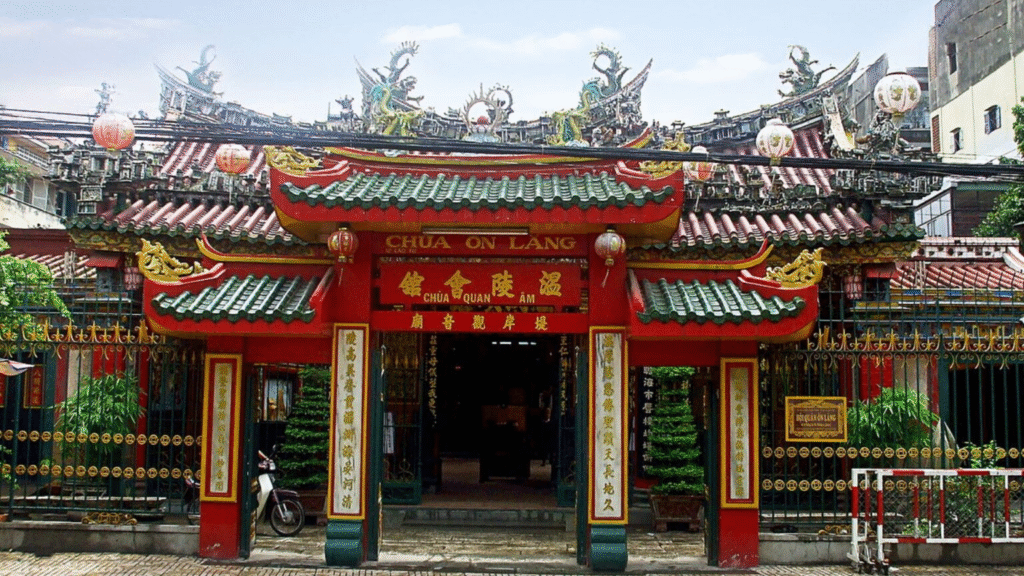
A Place of Worship and Cultural Heritage
The On Lang Assembly Hall (Quan Am Pagoda) is dedicated to Thien Hau Thanh Mau, the Goddess of the Sea, and remains a significant spiritual site for the Chinese community in Saigon. It also attracts countless visitors who come to admire its intricate architecture and immerse themselves in the atmosphere of ancient Saigon.
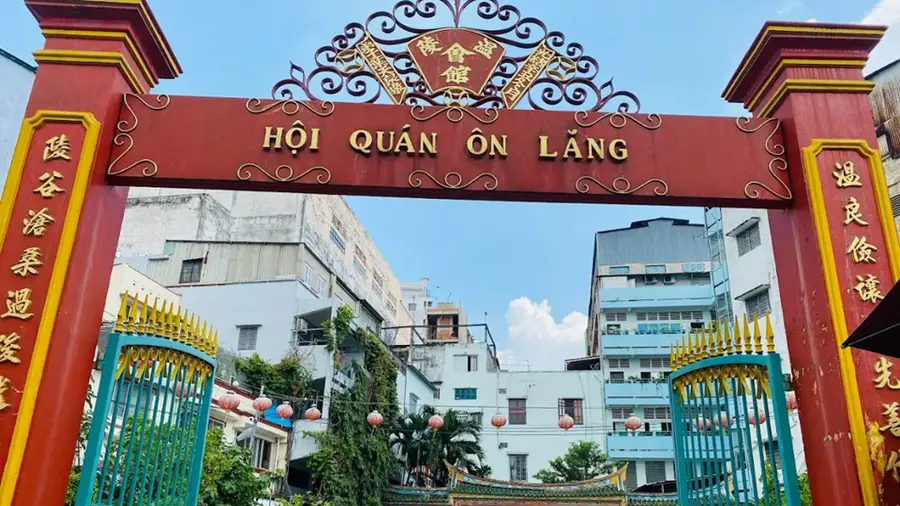
What makes this assembly hall truly special is its Fujian-style decorative techniques—dragon statues, colorful reliefs, and detailed sculptures mounted on the roof edges. Today, anyone visiting Saigon is drawn here not only to worship but also to experience a living cultural landmark that embodies both history and artistry.
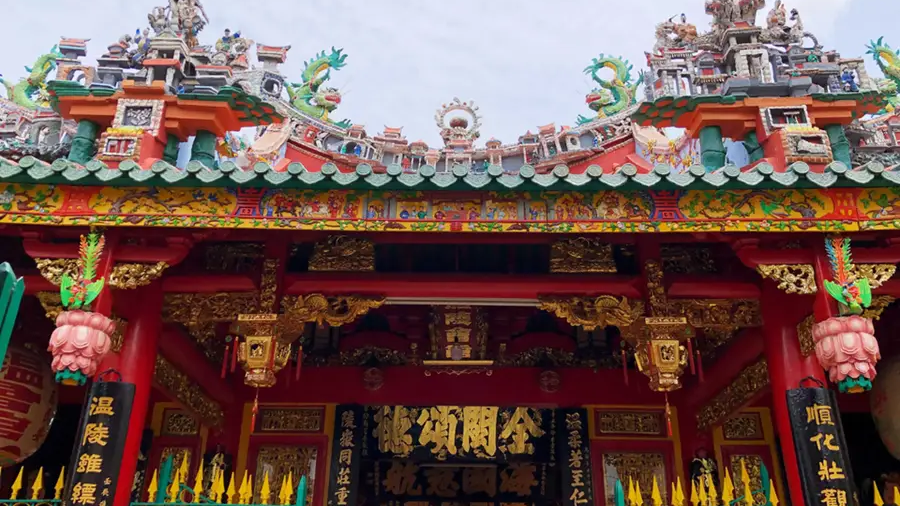
The pagoda is located on Lao Tu Street, Ward 11, District 5. This place is also known as a place where Kinh Chinese people have settled down for many years.
The History of On Lang Assembly Hall
The term “Assembly Hall” originated in 1787, when Nguyen Anh permitted Chinese immigrants to form associations to manage community affairs and collect taxes. These headquarters became known as Assembly Halls.
The Wenling Assembly Hall, now known as Quan Am Pagoda, was established by Chinese immigrants from Quanzhou Prefecture, Fujian Province. Over the years, it has undergone several renovations: first in 1828 under the reign of Emperor Dao Quang, later in 1867–1869, and again in 1897, 1993, and 1995.
Originally, it served multiple purposes: a venue for community meetings, worship of deities, supporting fellow countrymen, and preserving Chinese customs. Its long history makes it a cornerstone of Saigon’s Chinese heritage.
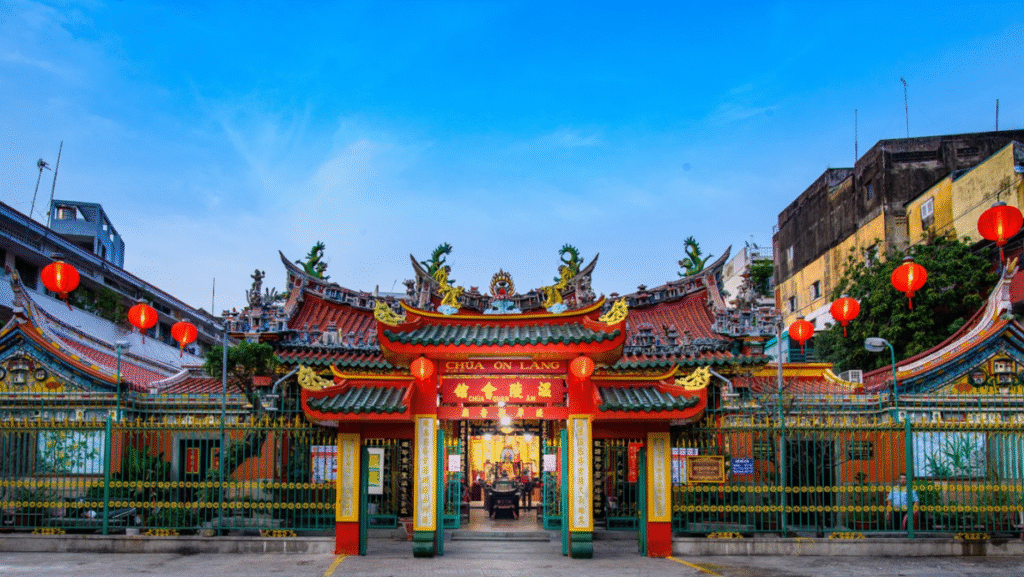
Architectural Highlights of Quan Am Pagoda
Exterior Design
Built in 1809 on a site covering 1,800 square meters, the pagoda follows the style of a traditional Chinese temple. According to feng shui, a fish pond was placed opposite the hall to harmonize energy.
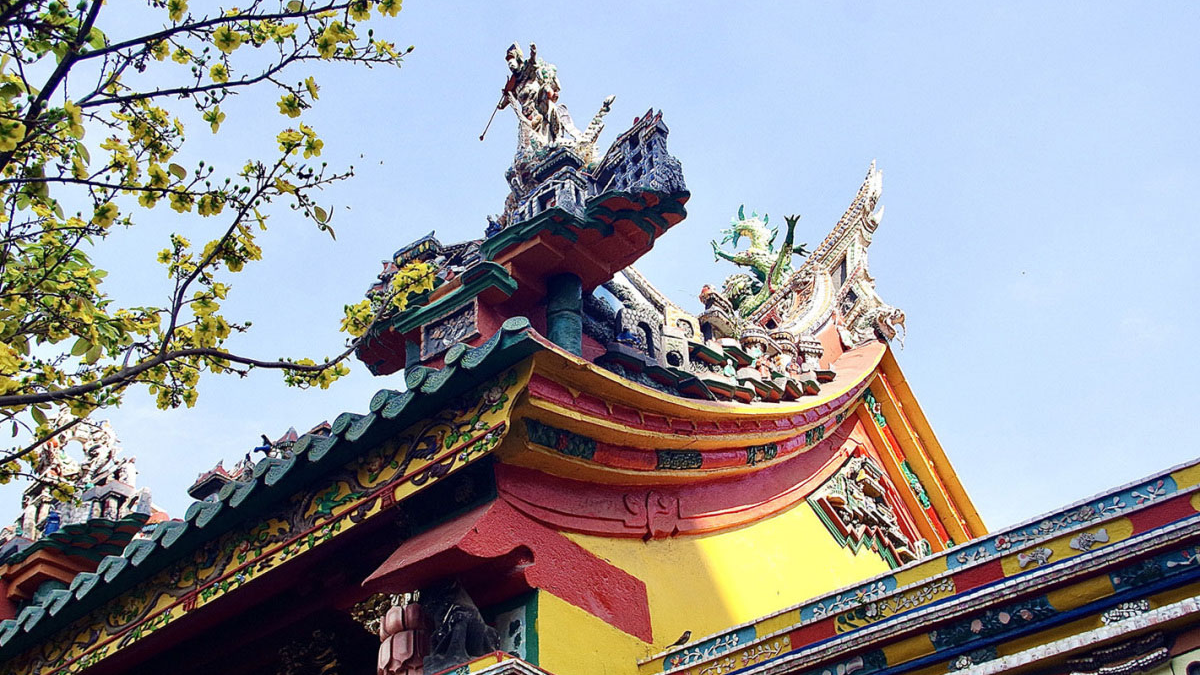
The wooden supporting frames, tubular roof tiles, and curved ridges reflect Fujian-style architecture. The roof of the front hall is decorated with intricate sculptures of dragons, phoenixes, unicorns, and other mythical creatures. Visitors often stop here to admire the sight of two dragons fighting for a pearl.
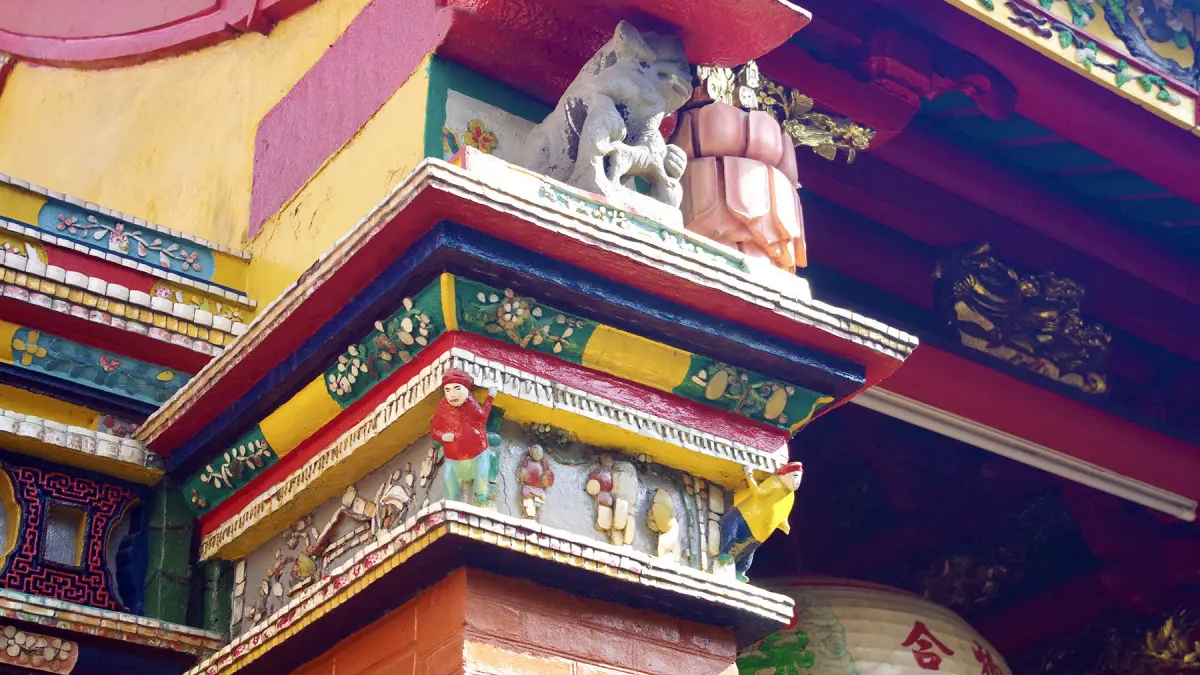
The layout includes a rectangular central house divided into three sections—the front hall, middle hall, and main hall—with three adjoining rows of houses forming a U-shaped structure. Unlike other Chinese assembly halls, the courtyard here is smaller, giving it a more intimate setting.
Interior Masterpieces
Inside, the pagoda is a stunning blend of sculpture, painting, and decorative art. Multiple altars and statues fill the halls, with saints’ expressions captured in lifelike detail.
Wooden reliefs, both openwork and embossed, are painted in gold, adding a sense of grandeur. The roofs and porches feature symbolic animals such as dragons, turtles, unicorns, and phoenixes, along with legendary Chinese motifs.
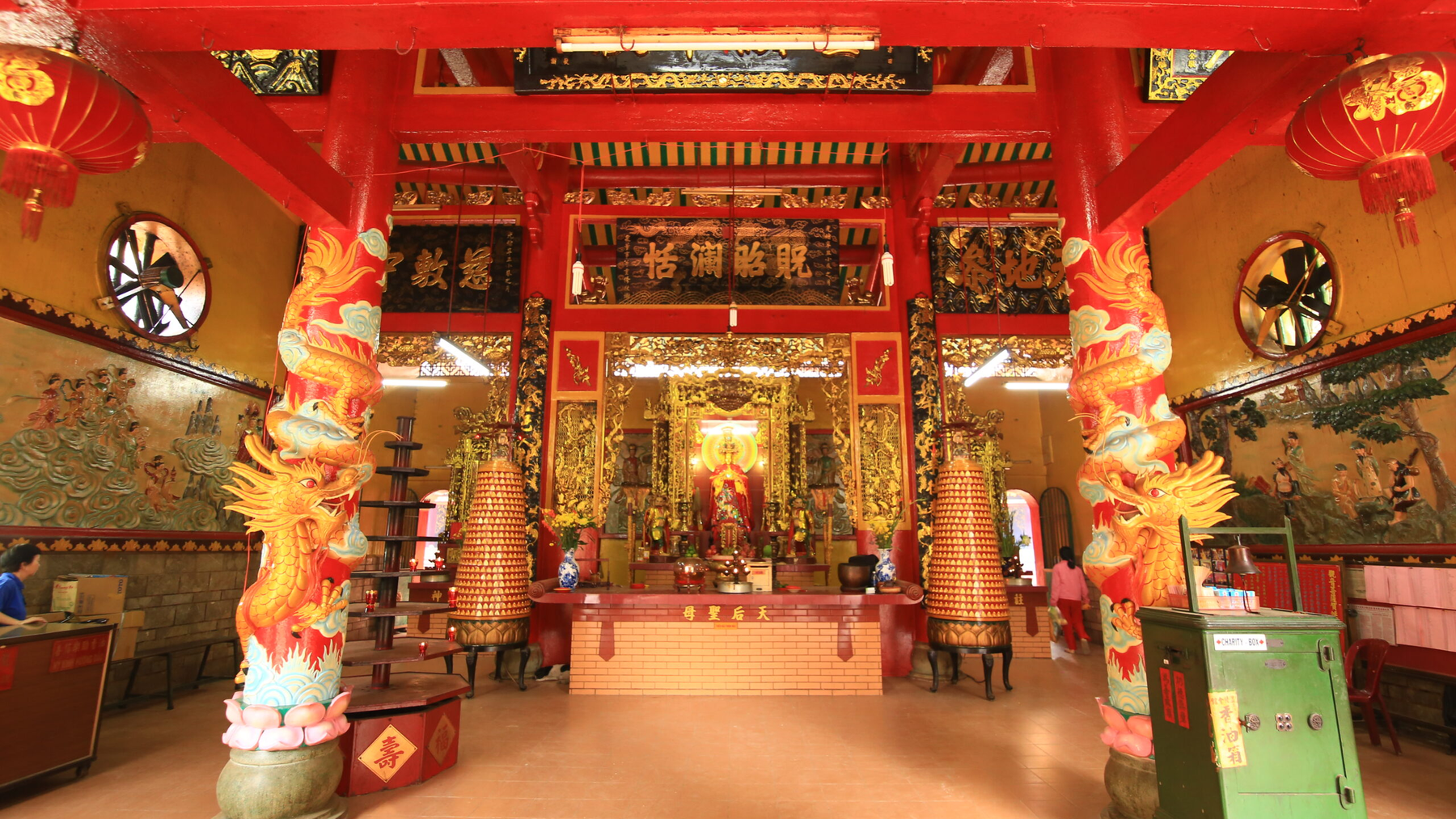
Among its treasures are horizontal lacquered boards and couplets engraved in artistic calligraphy styles, as well as a pair of stone lions from 1869 guarding the entrance. One lion holds a pearl, while the other plays with a cub, symbols of protection and prosperity.
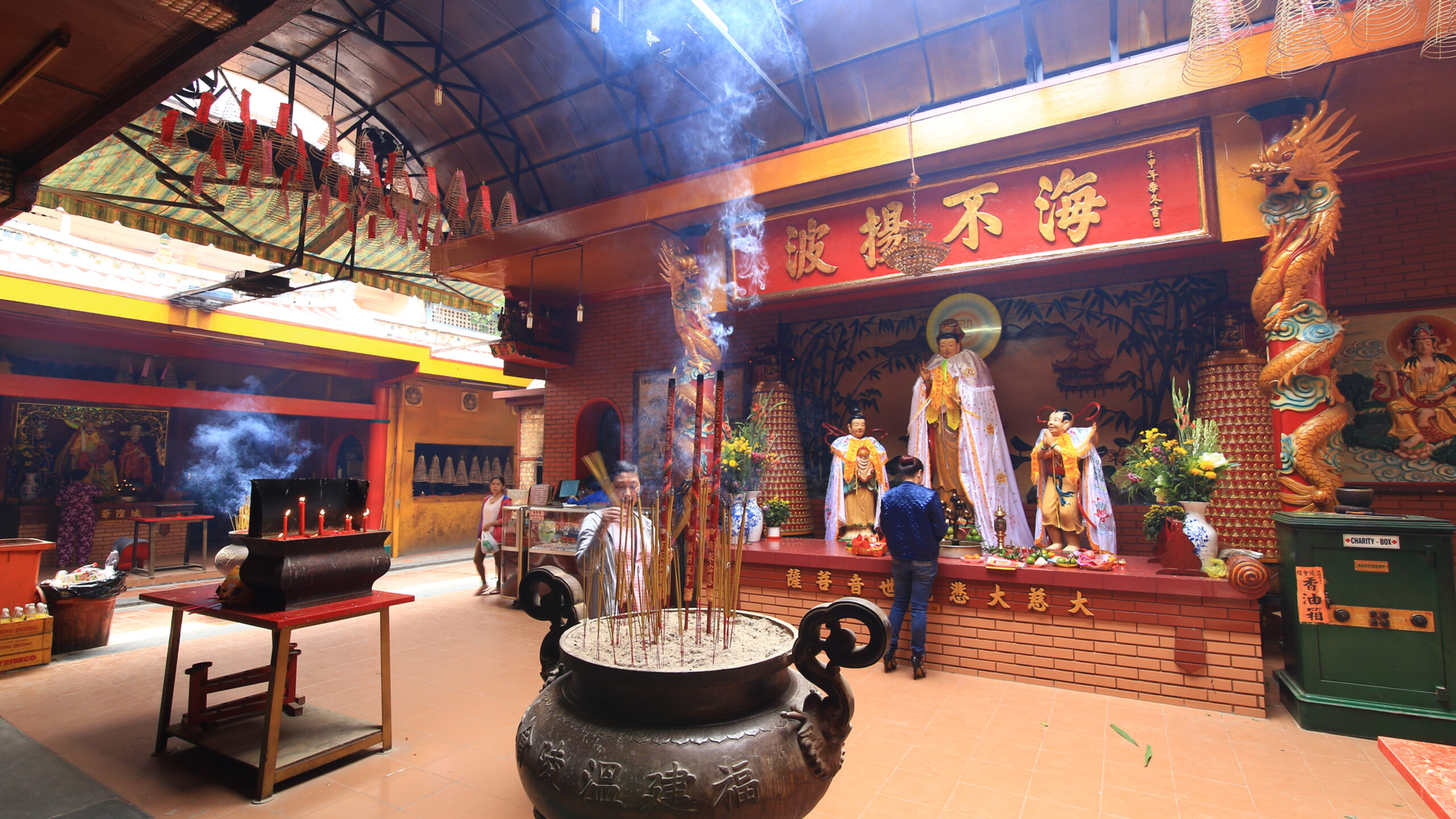
Unique Worship Customs
Beating the Villain
One of the most distinctive customs at Quan Am Pagoda is “beating the villain.” Worshippers use shoes to strike paper effigies of “bad guys,” symbolically driving away harm.
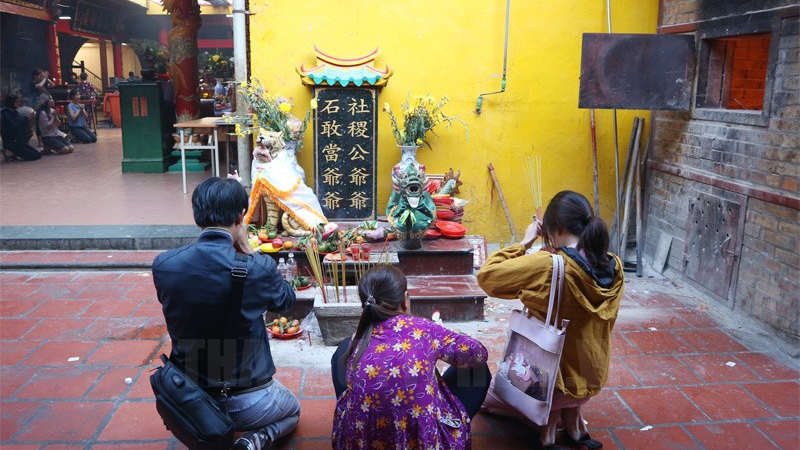
This ritual takes place annually on March 5–6 (solar calendar) in front of the Tiger altar, where offerings of tangerines, dumplings, and raw pork are made. The practice reflects a blend of spiritual belief and folk tradition.
Love Prayer Ceremony
Another popular ritual is the love prayer ceremony. Visitors purchase a roll of red thread with a needle already threaded, then present it at the altar of Hoa Phan Phu Nhan to pray for happiness in romance. This charming custom makes the pagoda especially beloved among young visitors.
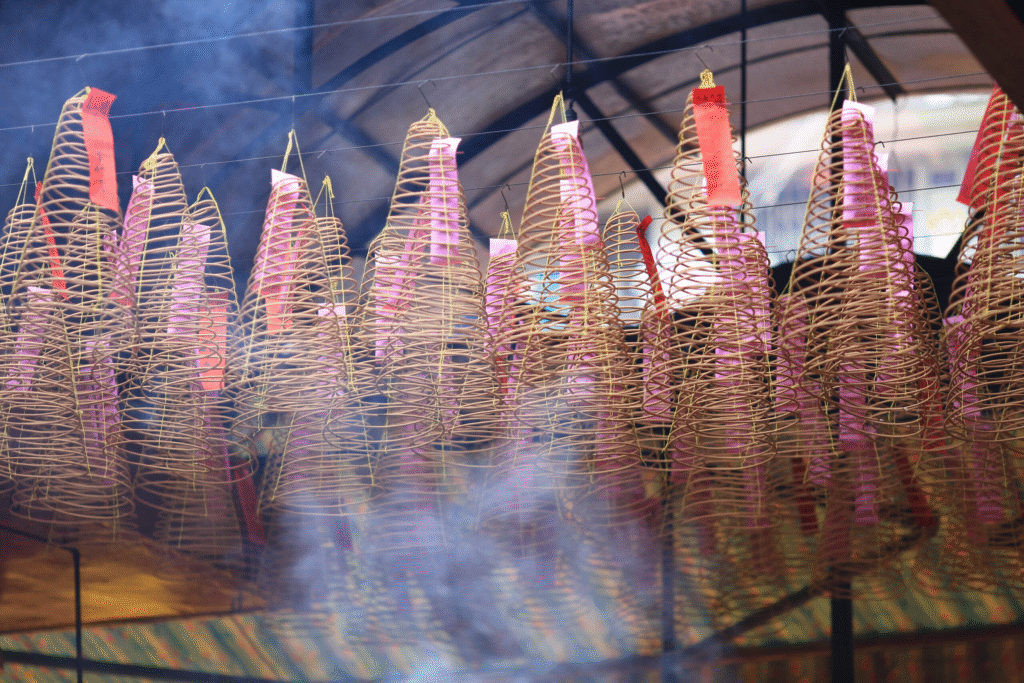
Why Visit Quan Am Pagoda ?
A trip to Quan Am Pagoda is not just a cultural stop—it is a journey into the living history of Saigon’s Chinatown. From the sacred rituals to the artistry of Fujian-inspired architecture, every corner tells a story of resilience, belief, and tradition.
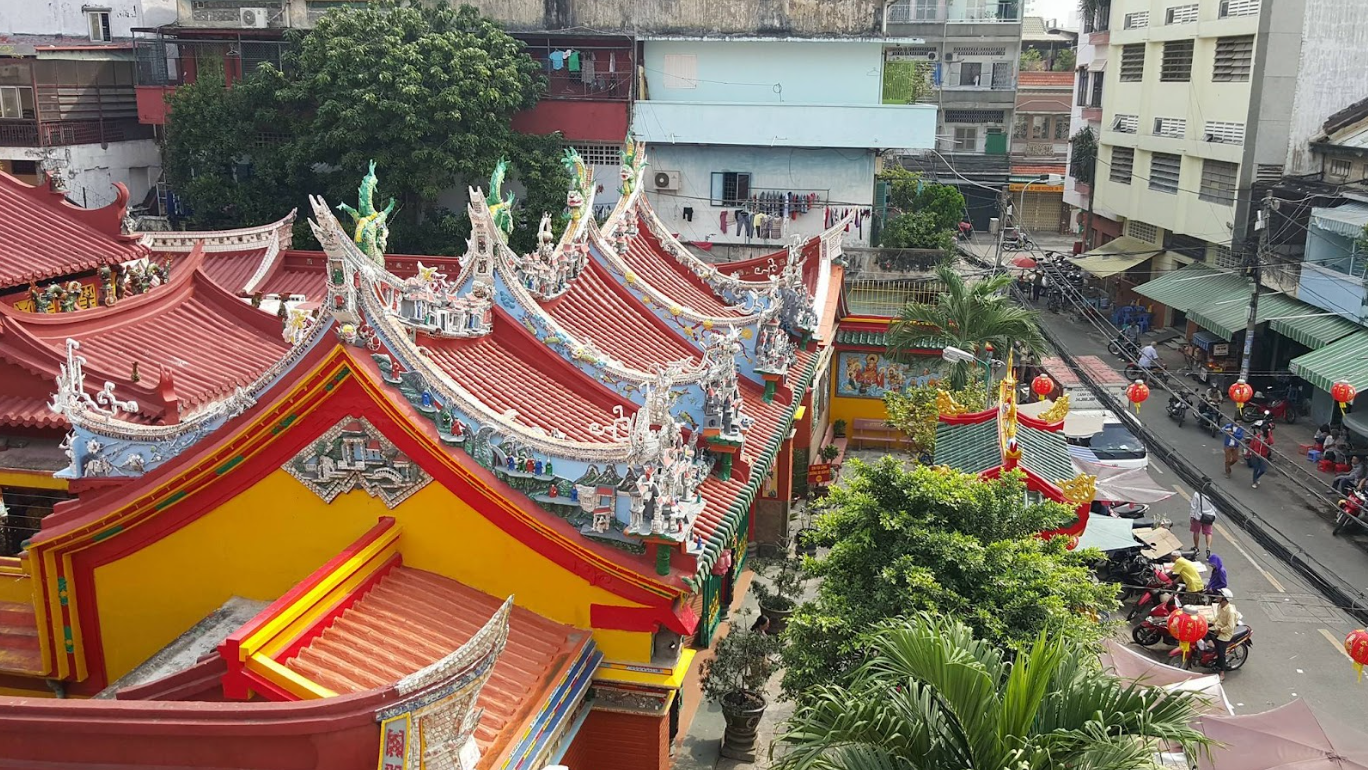
Travel Tips for Visiting Quan Am Pagoda
- Best Time to Visit: Early morning is the most peaceful time to experience the spiritual atmosphere, while festivals and rituals (such as the “beating the villain” custom in March) offer a more lively cultural scene.
- Dress Respectfully: As this is a place of worship, wear modest clothing, avoid shorts, sleeveless tops, or revealing outfits.
- Photography Etiquette: You can take photos of the architecture, but always ask before photographing worshippers or ceremonies.
- Mind the Smoke: The incense inside the pagoda can be strong, if you’re sensitive, bring a mask or spend more time in the courtyard.
Joining Saigon Taste Tours, you’ll not only discover this pagoda but also gain insight into the deeper history of Saigon’s Chinese community, making your visit an enriching cultural experience.
Book a Once-in-a-Lifetime Experience with us
OUR EXPERIENCES
Ao Dai Motorbike Tours Cu Chi Tunnels Excursions Ho Chi Minh Day Trips, and Combos Mekong Delta Adventures Saigon: Culture & History Saigon Street Food Southern Vietnam Coastal Adventures Taste Of Saigon Tours
Don’t leave just yet—stay with us a bit more!


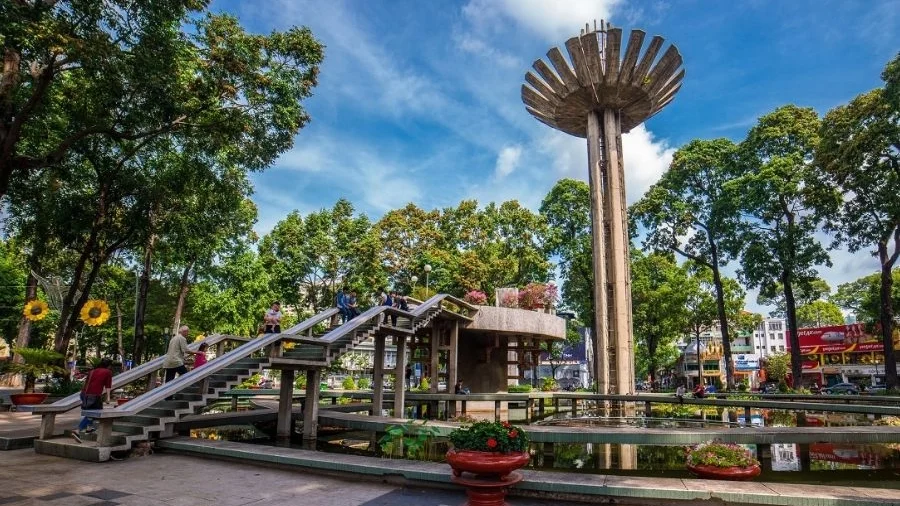
Leave a Reply